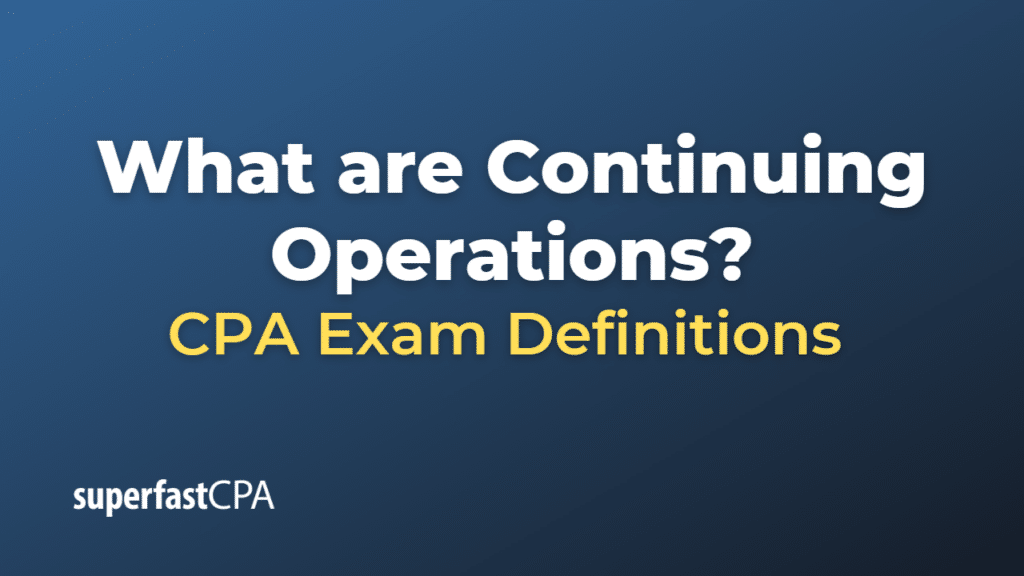Continuing Operations
Continuing operations, in the context of financial reporting and accounting, refer to the normal, ongoing business activities and revenue-generating operations of a company that are expected to continue in the foreseeable future. These operations exclude any one-time or non-recurring events, such as discontinued operations, extraordinary items, or gains/losses from the sale of assets.
Financial statements, such as the income statement, often separate the results of continuing operations from those of discontinued operations to provide a clearer picture of a company’s ongoing financial performance. This distinction allows investors, analysts, and other stakeholders to evaluate the company’s core business performance and make better-informed decisions about its future prospects.
Continuing operations typically include revenue from the sale of goods or services, cost of goods sold, operating expenses, and other income/expenses directly related to the core business activities. In contrast, discontinued operations refer to the financial results of business segments or activities that the company has decided to cease, sell, or otherwise dispose of, and which are not expected to continue in the future.
By focusing on continuing operations, stakeholders can better assess a company’s long-term financial health, profitability, and growth potential, as well as compare its performance with other companies in the same industry.
Example of Continuing Operations
Let’s consider a fictional example of a company called XYZ Electronics, which manufactures and sells smartphones, tablets, and laptops. The company decides to discontinue its tablet division and focus on its smartphone and laptop products.
In its financial reporting, XYZ Electronics will present the financial results of its continuing operations (smartphones and laptops) separately from the financial results of its discontinued operations (tablets).
XYZ Electronics’ income statement might include the following sections:
- Revenue from continuing operations:
- Smartphone sales: $500,000
- Laptop sales: $300,000 Total revenue from continuing operations: $800,000
- Expenses from continuing operations:
- Cost of goods sold: $400,000
- Operating expenses: $250,000 Total expenses from continuing operations: $650,000
- Income from continuing operations (before taxes): $150,000 (Total revenue from continuing operations – Total expenses from continuing operations)
- Discontinued operations:
- Tablet sales: $100,000
- Tablet-related expenses: $90,000 Income from discontinued operations (before taxes): $10,000
- Net income (before taxes): $160,000 (Income from continuing operations + Income from discontinued operations)
By separating the financial results of continuing and discontinued operations, XYZ Electronics provides a clearer picture of its ongoing business performance. Investors, analysts, and other stakeholders can now focus on the company’s core business activities (smartphones and laptops) when assessing its long-term financial health, profitability, and growth potential.












